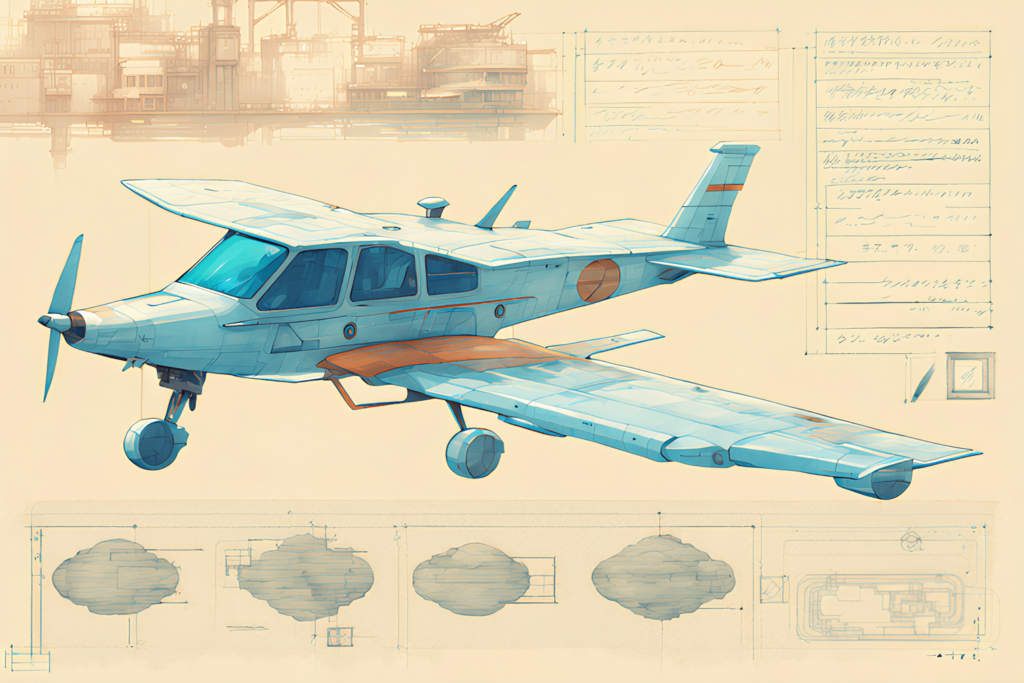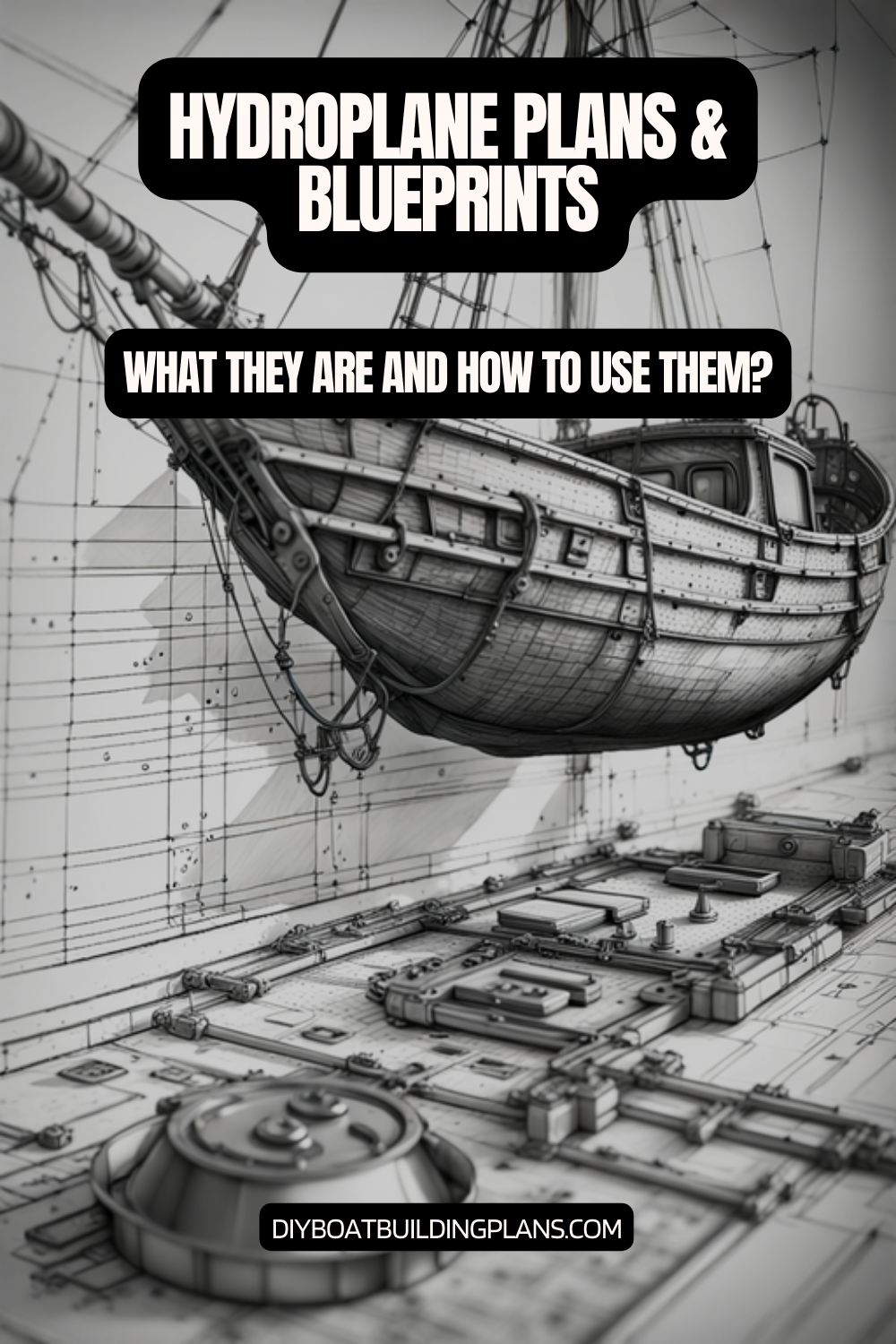Ever dreamed of making your own fast watercraft? DIY Hydroplane Plans & Blueprints let boat lovers turn materials into a fun watercraft.
Building a homemade hydroplane is more than a weekend hobby. It mixes engineering, creativity, and love for the sea. Even newbies can build an 8-foot hydroplane with the right kits and plans, ready for exciting water rides.
These DIY plans guide you from choosing the right wood to making precise cuts. They help you build a fast, stable, and personal watercraft.
Key Takeaways – Hydroplane Plans & Blueprints
- DIY hydroplane plans offer detailed boat-building guides
- Projects usually take 3-4 days to finish
- Good for all skill levels, from beginners to pros
- Features many hydroplane designs and engine setups
- Cost-effective, with plans starting at $50

Introduction to DIY Hydroplane Projects
Explore the world of wooden hydroplane designs, where passion and craftsmanship meet. Hydroplane construction guides let enthusiasts turn raw materials into fast watercraft. These boats skim across the water’s surface.
These vessels are more than just boats. They show off engineering creativity and personal skill. Wooden hydroplane designs have fascinated boat builders for years. They offer speed, precision, and artistic expression.
What is a Hydroplane?
A hydroplane is a special watercraft made to cut through water fast. Its unique hull design lets it “lift” above the water. This reduces drag and boosts speed.
- Designed for high-speed performance
- Minimizes water contact through specialized hull shape
- Typically used in racing and recreational settings
The Benefits of Building Your Own Hydroplane
Building a hydroplane yourself has many perks for boat lovers and makers.
| Benefit | Description |
|---|---|
| Cost-Effectiveness | Save money compared to buying pre-built boats |
| Customization | Design unique features that fit your taste |
| Skill Development | Learn advanced woodworking and marine engineering |
“Building a hydroplane is not just about creating a boat – it’s about crafting a piece of personal engineering art.”
Hydroplane construction guides offer detailed plans and techniques. They help turn wooden materials into fast watercraft. From picking the right wood to understanding design principles, these projects are a journey of learning and creativity.
Essential Materials for Hydroplane Construction
Building your own high-speed boat needs careful material and tool selection. DIY racing boat blueprints require precision and the right tools. This is how you turn your hydroplane idea into reality.
When starting a hydroplane project, picking the right materials is key. You want a boat that’s both light and strong.
Wood Types for Hydroplanes
The base of a good hydroplane is built on premium wood:
- Marine plywood (3/4″ minimum thickness recommended)
- Mahogany for deck and transom construction
- Exterior-grade plywood (5mm or 3/16″ thickness)
- White pine for stringers
Recommended Tools for Assembly
Right tools are vital for making your DIY racing boat blueprints real:
- Coping saw or jigsaw for precise cutting
- Sandpaper (various grits)
- Wood glue
- Measuring tape
- Pencils and templates
“Power tools should only be used with adult supervision” – Safety First Principle
Fasteners and Paints You’ll Need
Securing your hydroplane needs specific fasteners:
- Silicon-bronze screws
- Ring nails
- Marine-grade varnish (4 coats recommended)
- Exterior marine paint
Knowing these materials will help you build a strong and fast boat. It will meet professional standards.
Pro tip: Always buy materials from trusted marine supply stores. This ensures quality and durability.
Understanding Hydroplane Design Principles
Creating successful homemade powerboats needs a deep understanding of hydroplane hull templates and advanced engineering. Designers must balance many complex factors. This is to make high-performance boats that move through water with little resistance.
Hydroplane design focuses on two key elements: lift generation and drag reduction. These elements decide how well a boat moves on water.
Lift Dynamics in Hydroplane Configurations
Professional designers know lift is key for performance. The hull’s shape is important for creating an air cushion. This cushion reduces water friction.
- Flat-bottom hull designs maximize initial lift
- Slightly concave bottoms improve water displacement
- Strategic angle modifications enhance speed
Weight Distribution Strategies
Getting the weight right turns hydroplane hull templates into racing machines. Placing components carefully ensures stability and control at high speeds.
| Component | Ideal Placement | Impact on Performance |
|---|---|---|
| Engine | Center-rear | Improves balance |
| Fuel Tank | Low center of gravity | Enhances stability |
| Driver Seat | Centered | Optimizes weight distribution |
“Every inch matters in hydroplane design. The difference between victory and defeat can be measured in millimeters.” – Professional Racing Engineer
By understanding these basic design principles, fans can make their homemade powerboats into top-notch watercraft. These boats will show remarkable speed and performance.
Unlock the secrets to building your dream boat with MyBoatPlans! With detailed plans for over 518 boats and expert video tutorials, you’ll have everything you need to create your perfect vessel. Click here to begin your journey!
Step-by-Step Guide to Building Your Hydroplane
Building your own hydroplane is a thrilling adventure. It mixes technical skills with creative passion. Whether you’re using boat building kits or making custom propeller designs, careful planning and detail are essential.
Preparing Your Workspace
A clean and organized workspace is vital for a successful hydroplane. Choose a spot that’s clean, well-lit, and has good air flow. Make sure you have:
- Sturdy workbench
- Proper lighting
- Adequate tool storage
- Protective floor covering
Creating the Blueprint
Good planning is the base of a great hydroplane. For kits, check the templates carefully. For custom designs, remember these blueprint tips:
- Measure twice, cut once
- Use precise scaling techniques
- Mark critical structural points
- Double-check all dimensions
Building the Hull
The hull is the core of your hydroplane. Drawing from classic designs like the PM-38 motorboat, which could be built in 38 hours, follow these steps:
- Select high-quality marine-grade plywood
- Cut hull pieces with precision
- Sand edges for smooth connections
- Apply waterproof sealant
“A well-constructed hull is the difference between a great hydroplane and a simple boat.” – Nautical Engineering Experts
| Hull Construction Materials | Recommended Type | Durability Rating |
|---|---|---|
| Plywood | Marine-grade | High |
| Sealant | Polyester Resin | Excellent |
| Fasteners | Stainless Steel | Corrosion Resistant |
Pro tip: Always test-fit components before final assembly to ensure perfect alignment and minimize possible issues during construction.
Safety Considerations for Hydroplane Building
Building DIY Hydroplane Plans & Blueprints requires a serious commitment to safety. When making homemade hydroplanes, you need to be careful and take protective steps. This ensures a safe building and operating experience.
Personal Protective Equipment (PPE)
Wearing the right protective gear is key to safety. When working on your DIY hydroplane, you’ll need:
- Safety glasses to protect your eyes from debris
- Dust masks for your lungs
- Work gloves to prevent hand injuries
- Ear protection when using power tools
- Sturdy closed-toe shoes
Safe Handling of Tools
Managing tools safely is essential when building homemade hydroplanes. Here are some important tips:
- Read and understand all tool manufacturer instructions
- Keep your workspace clean and organized
- Check tools before each use
- Unplug power tools when not in use
“Safety isn’t expensive, it’s priceless” – Unknown
Workspace and Chemical Safety
Chemical safety is critical when working with DIY Hydroplane Plans & Blueprints. Make sure:
- You have good ventilation when using adhesives
- Chemicals and paints are stored properly
- You wear chemical-resistant gloves
Water Safety Precautions
Hydroplane safety isn’t just about building. It also includes water safety:
Download over 500 Boat Plans. Click on the link below.
-->Click Here<--
| Safety Requirement | Details |
|---|---|
| Life Jacket | Always wear a US Coast Guard-approved life jacket |
| Local Regulations | Follow all local boating and watercraft laws |
| Emergency Equipment | Carry communication and signaling devices |
In the world of homemade hydroplanes, your safety is the most important thing.
Common Mistakes to Avoid
Building a wooden hydroplane needs precision and careful detail. Successful guides stress avoiding major errors. These mistakes can harm your project’s performance and safety.
Design Detail Pitfalls
Rushing through designs can cause big problems. Builders often make these mistakes:
- Misinterpreting blueprint measurements
- Skipping detailed plan review
- Modifying designs without expert consultation
- Neglecting precise cutting and alignment
Weight Distribution Challenges
Managing weight is key in hydroplane construction guides. Ignoring weight limits can dramatically affect boat performance and stability.
| Mistake | Potential Consequence | Prevention Strategy |
|---|---|---|
| Uneven Weight Distribution | Poor Handling | Use Precise Measurement Tools |
| Exceeding Weight Limits | Reduced Speed | Follow Original Design Specifications |
| Incorrect Material Selection | Structural Weakness | Choose Recommended Wood Types |
“Precision in design is the difference between a successful hydroplane and a costly mistake.” – Boat Building Expert
By carefully reviewing plans, understanding weight dynamics, and sticking to original designs, you can avoid these common mistakes.
Testing Your Hydroplane
Launching your high-speed boat plans needs careful testing and precision. DIY racing boat blueprints come to life in initial water trials. Every detail matters for the best performance.
Initial Water Trials: First Steps
Water testing is a key phase in hydroplane development. Success depends on several important factors:
- Start in calm waters with minimal wave interference
- Begin at low speeds, gradually increasing velocity
- Observe boat handling and stability
- Check weight distribution and lift characteristics
Performance Adjustments Strategies
After initial trials, making strategic adjustments is vital for better performance. Focus on these key areas:
- Motor placement refinement
- Hull shape modifications
- Weight distribution optimization
| Performance Aspect | Adjustment Recommendation |
|---|---|
| Stability | Modify center of gravity |
| Speed | Fine-tune motor positioning |
| Lift | Adjust hull geometry |
“Testing transforms blueprints into high-performance watercraft.” – Professional Boat Designer
Safety is always the top priority during testing. Wear the right protective gear, test in controlled areas, and always put safety first.
Resources for DIY Hydroplane Enthuisiasts
Starting a homemade powerboat project is more than just knowing how to build. You need good resources and a community that supports you. This will help you on your journey with hydroplane hull templates.
Connecting with Online Communities
The world of hydroplane building is all about sharing knowledge and passion. There are many online places where you can find great advice:
- Boating forums for DIY powerboat building
- Facebook groups for hydroplane builders
- Reddit communities on marine engineering
- YouTube channels for building tips
Essential Guides and Publications
To build a great hydroplane, you need to learn a lot. Professional designers and builders have made amazing guides for you:
- Glen-L Marine Designs offers hydroplane plans
- Woodworking magazines with boat-building tips
- Technical manuals from racing associations
- Books on hydroplane hull design
“The right resources can turn a tough project into an amazing adventure.” – Professional Boat Builder
Recommended Learning Platforms
Learn more through structured courses that dive deep into homemade powerboat designs:
- Udemy courses on marine engineering
- Online workshops by hydroplane builders
- Webinars on hydroplane hull templates
- Virtual conferences for marine fans
Remember, building a hydroplane is about knowing your stuff, having a supportive community, and always learning more.

Conclusion and Final Thoughts
Building a DIY hydroplane is an exciting journey into marine engineering and personal craftsmanship. With over 500 boat building kits available, enthusiasts can explore diverse hydroplane propeller designs. These designs match their skill level and passion. The process demands patience, precision, and a commitment to continuous learning.
The world of hydroplane construction offers remarkable opportunities for water sports lovers. Mastering hydroplane propeller designs requires understanding complex engineering principles. It also involves developing practical skills. Whether you aim to create a racing vessel or a recreational boat, each project is a unique learning experience. It enhances technical knowledge and creative problem-solving.
Enjoying the Hydroplane Experience
Your hydroplane journey extends beyond construction. Exploring different boat building kits helps refine techniques and expand technical understanding. Joining marine enthusiast communities can provide valuable insights, support, and inspiration for future projects.
Next Steps for Aspiring Builders
Start small, remain curious, and embrace challenges in hydroplane design. Research advanced techniques, attend workshops, and connect with experienced builders. Every hydroplane project represents an opportunity to grow your skills and create something truly remarkable on the water.
FAQ – Hydroplane Plans & Blueprints
What materials do I need to build a hydroplane?
You’ll need marine plywood for the hull and mahogany for the deck. You’ll also need printed templates, wood glue, and cutting tools like jigsaws. Sandpaper, safety glasses, and dust masks are also important. Don’t forget silicon-bronze screws, ring nails, and marine-grade paint. You’ll need scissors, pencils, and hand tools for precise work.
How difficult is it to build a DIY hydroplane?
Building a hydroplane can be easy or hard, depending on your skill and design. Beginners can start with simple wooden models. More experienced builders might aim for full-sized boats. Always follow blueprints carefully and focus on design principles like weight and shape.
What safety precautions should I take when building a hydroplane?
Wear safety glasses, dust masks, and gloves when working. Make sure the area is well-ventilated when using adhesives and paints. Work in a clean space and handle tools with care. Always wear a life jacket and follow boating laws when testing or using the hydroplane.
How long does it take to build a hydroplane?
Building time varies from weeks to months, based on design complexity and your skill. A simple model might take a weekend, while a racing hydroplane could take months.
Where can I find hydroplane building plans and resources?
Check out Glen-L Marine Design, online forums, woodworking magazines, and hydroplane websites. Online communities offer advice and experiences from experts.
What are the most common mistakes to avoid when building a hydroplane?
Avoid misreading blueprints and rushing the build. Also, don’t make big design changes without expert advice. Focus on balance and follow plans closely. Double-check measurements and seek help when unsure.
Can I customize my hydroplane design?
Yes, you can customize your hydroplane. But, be careful with big changes that might affect performance or safety. Start with small changes and get advice before making big ones.
What type of wood is best for hydroplane construction?
Use marine plywood for the hull because it’s water-resistant and durable. Mahogany is great for the deck and transom for strength and looks. Choose high-quality, marine-grade woods for durability and structure.



